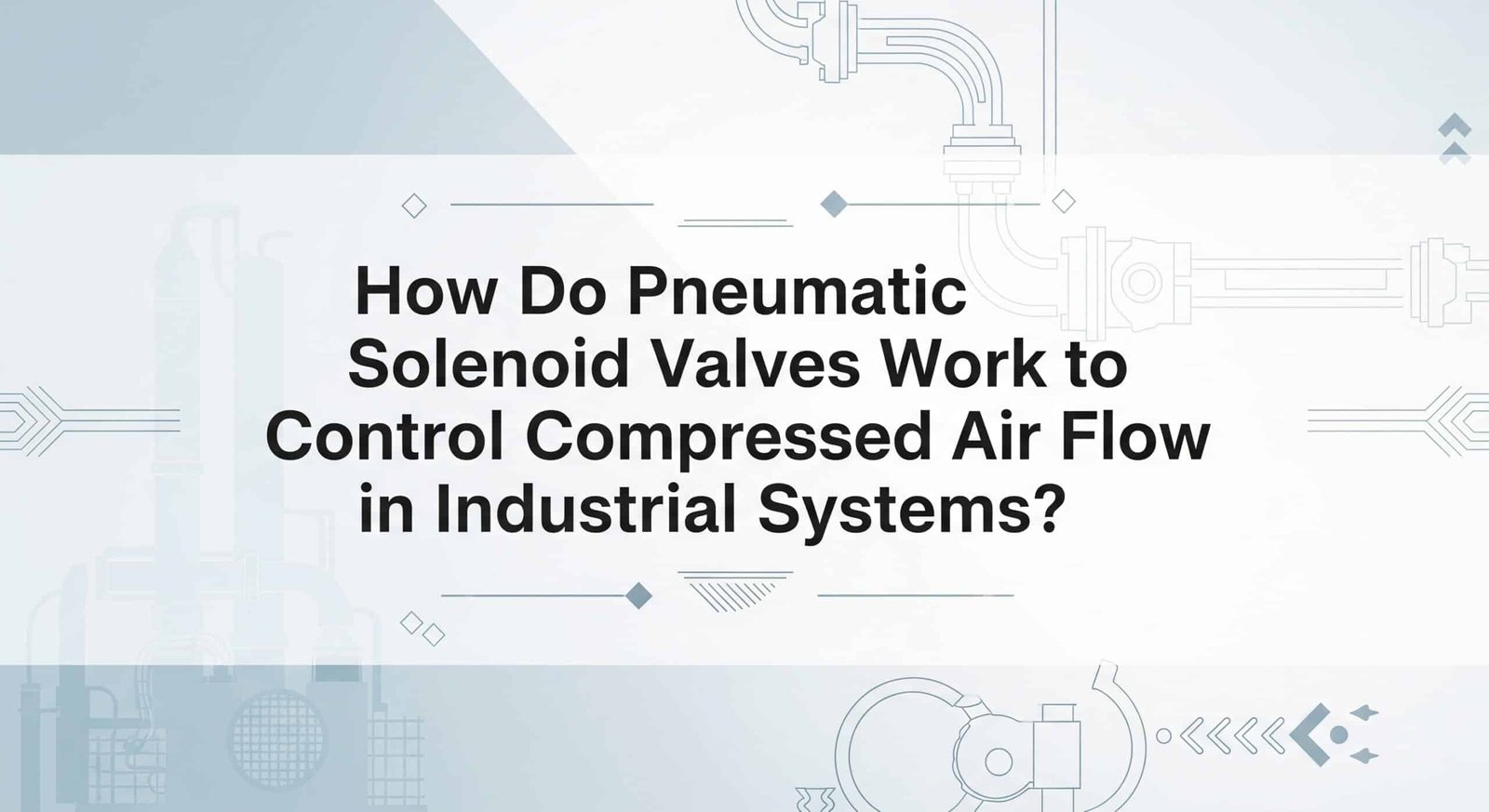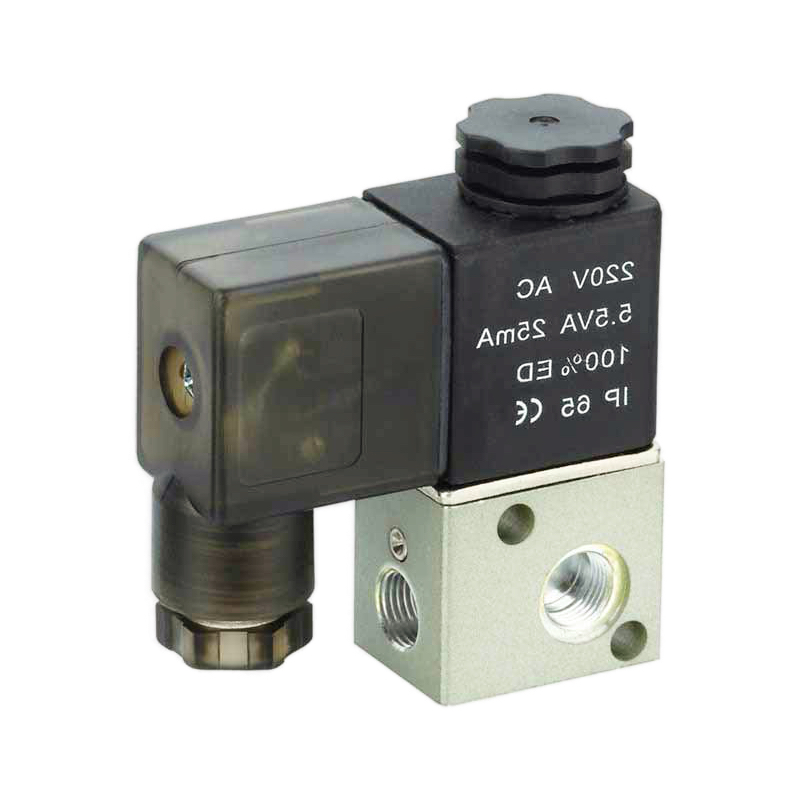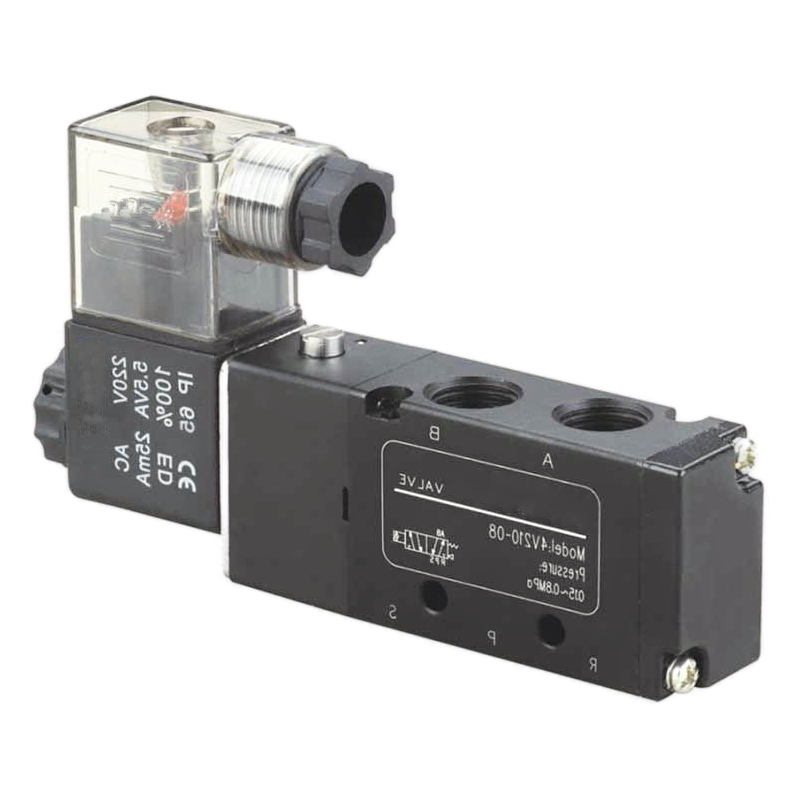When your automated production line experiences erratic cylinder movements and inconsistent timing that costs $15,000 daily in reduced output, the problem often stems from poorly understood or improperly selected solenoid valves that can’t deliver the precise air flow control modern pneumatic systems demand.
Pneumatic solenoid valves work by using electromagnetic coils to move internal valve spools or diaphragms, controlling compressed air flow direction and pressure to pneumatic actuators with response times1 as fast as 5-15 milliseconds for precise automation control.
Yesterday, I received a call from Mike Thompson, a maintenance supervisor at a packaging facility in Cleveland, Ohio, whose production line was suffering from delayed cylinder responses that were causing product jams and quality issues.
Table of Contents
- What Are the Core Operating Principles of Pneumatic Solenoid Valves?
- How Do Different Solenoid Valve Types Control Pneumatic Systems?
- Why Do Valve Selection and Sizing Impact Pneumatic System Performance?
- Which Solenoid Valve Solutions Provide Maximum Reliability and Cost Savings?
What Are the Core Operating Principles of Pneumatic Solenoid Valves?
Pneumatic solenoid valves are the control brain of compressed air systems, converting electrical signals into precise mechanical air flow control.
Pneumatic solenoid valves operate through electromagnetic force that moves internal valve elements to direct compressed air flow, with the solenoid coil creating a magnetic field that actuates a plunger or armature to open, close, or redirect air passages within milliseconds of receiving an electrical signal.

Fundamental Operating Components
In my 15 years at Bepto, I’ve seen how understanding valve internals helps engineers select the right solutions:
Electromagnetic Assembly
- Solenoid Coil: Creates magnetic field when energized
- Plunger/Armature: Moves in response to magnetic force
- Spring Return: Provides default position when de-energized
- Magnetic Core: Concentrates and directs magnetic flux
Valve Body Elements
- Valve Spool: Controls air flow direction
- Seats and Seals: Prevent air leakage
- Ports: Inlet, outlet, and exhaust connections
- Pilot Chambers: Enable larger valve operation
Operating Sequence Analysis
| Operation Phase | Electrical State | Magnetic Field | Valve Position | Air Flow |
|---|---|---|---|---|
| Rest Position | De-energized | None | Spring-loaded | Blocked/Exhausted |
| Energizing | Voltage Applied | Building | Moving | Transitioning |
| Actuated | Fully Energized | Maximum | Shifted | Full Flow |
| De-energizing | Voltage Removed | Collapsing | Returning | Transitioning |
Response Time Factors
Electrical Response
- Coil Inductance2: Affects magnetic field buildup
- Voltage Level: Higher voltage = faster response
- Current Draw: Determines magnetic force strength
- Control Signal: Clean switching improves performance
Mechanical Response
- Spring Force: Balances magnetic force
- Moving Mass: Lighter components respond faster
- Friction: Seal design affects movement speed
- Air Pressure: System pressure influences operation
How Do Different Solenoid Valve Types Control Pneumatic Systems?
Various solenoid valve configurations provide specific control capabilities for different pneumatic applications and system requirements.
Different solenoid valve types include 2-way, 3-way, 4-way, and 5-way configurations that control air flow direction, pressure, and exhaust functions, with direct-acting valves for small flows and pilot-operated valves for high-capacity applications up to 2000+ liters per minute.
Valve Configuration Types
2-Way Solenoid Valves
- Function: Simple on/off air flow control
- Applications: Blow-off nozzles, vacuum control
- Positions: Normally closed (NC) or normally open (NO)
- Advantage: Simple, reliable, cost-effective
3-Way Solenoid Valves
- Function: Pressure/exhaust control for single-acting cylinders
- Port Configuration: Pressure, cylinder, exhaust
- Applications: Single-acting cylinders, vacuum systems
- Benefit: Combines supply and exhaust in one valve
4-Way Solenoid Valves
- Function: Directional control for double-acting cylinders
- Port Configuration: Pressure, two cylinder ports, exhaust
- Applications: Double-acting cylinders, rotary actuators
- Control: Bidirectional motion control
5-Way Solenoid Valves
- Function: Enhanced directional control with separate exhausts
- Port Configuration: Pressure, two cylinder ports, two exhausts
- Applications: Rodless cylinders, precision positioning
- Advantage: Independent exhaust control for smooth operation
Operating Principle Comparison
| Valve Type | Direct Acting | Pilot Operated | Servo Assisted |
|---|---|---|---|
| Flow Capacity | Up to 50 L/min | Up to 2000 L/min | Up to 5000 L/min |
| Response Time | 5-15 ms | 15-50 ms | 10-30 ms |
| Pressure Range | 0-16 bar | 2-25 bar | 0-25 bar |
| Power Consumption | Low | Medium | Variable |
Real-World Application Story
Two months ago, I worked with Jennifer Martinez, a controls engineer at an automotive assembly plant in Detroit, Michigan. Her pneumatic grippers were experiencing slow response times that were reducing line speed by 12%. The existing 3-way valves couldn’t provide the rapid exhaust needed for high-speed operation. We replaced them with Bepto 5-way solenoid valves with separate exhaust ports, improving cycle times by 35% and increasing daily production by 450 units worth $67,500 in additional revenue. 🚀
Why Do Valve Selection and Sizing Impact Pneumatic System Performance?
Proper solenoid valve selection and sizing directly determine system response time, energy efficiency, and operational reliability.
Valve selection and sizing impact system performance through flow capacity matching, pressure drop minimization, and response time optimization, with undersized valves causing slow operation and oversized valves wasting energy and reducing control precision.
Critical Selection Parameters
Flow Capacity Requirements
- Cylinder Volume: Determines air consumption per cycle
- Cycle Time: Required speed affects flow rate needs
- Pressure Drop: Valve restriction impacts performance
- Safety Factor: 20-30% margin for reliable operation
Pressure Considerations
- Operating Pressure: System working pressure range
- Minimum Pilot Pressure: Required for pilot-operated valves
- Pressure Drop: Acceptable loss through valve
- Crack Pressure: Minimum pressure to open valve
Environmental Factors
- Temperature Range: Operating environment conditions
- Contamination Level: Filtration requirements
- Vibration Resistance: Mounting and shock considerations
- Electrical Protection: IP rating3 for moisture/dust
Sizing Calculation Framework
Flow Rate Calculation
Formula: Q = (V × P × n) / (60 × t)
- Q = Required flow rate (L/min)
- V = Cylinder volume (L)
- P = Operating pressure (bar)
- n = Cycles per minute
- t = Fill time fraction
Valve Cv Factor
Selection Rule: Choose valve Cv 25-50% higher than calculated requirement for optimal performance and longevity.
Performance Impact Analysis
| Sizing Condition | System Response | Energy Efficiency | Component Life | Cost Impact |
|---|---|---|---|---|
| Undersized | Slow/sluggish | Poor | Reduced | High maintenance |
| Properly Sized | Optimal | Excellent | Extended | Minimal |
| Oversized | Fast but wasteful | Poor | Normal | Higher energy costs |
Which Solenoid Valve Solutions Provide Maximum Reliability and Cost Savings?
Strategic solenoid valve selection and maintenance programs deliver significant operational improvements and cost reductions for pneumatic systems.
Bepto’s high-quality solenoid valve replacements provide 40-60% cost savings compared to OEM parts while delivering equivalent performance and reliability, with typical service life exceeding 50 million cycles and 24-48 hour delivery times versus weeks for original manufacturer components.

Bepto Valve Advantages
Quality and Performance
- Extended Life: 50+ million cycle rating
- Fast Response: 5-15ms switching times
- Low Power: Energy-efficient coil designs
- Universal Compatibility: Direct OEM replacements
Cost-Effectiveness
- Purchase Price: 40-60% savings vs. OEM
- Delivery Speed: 24-48 hours vs. 2-6 weeks
- Inventory Management: Reduced carrying costs
- Emergency Support: 24/7 technical assistance
ROI Through Smart Valve Selection
Maintenance Cost Reduction
Our customers consistently achieve impressive savings:
- Valve Replacement: 50-60% cost reduction
- Inventory Costs: 40% reduction through standardization
- Downtime Prevention: 80% faster delivery times
- Labor Savings: 30% reduction in maintenance hours
Energy Efficiency Improvements
- Power Consumption: 20-25% reduction with efficient coils
- Air Consumption: Optimized flow reduces waste
- System Pressure: Lower operating pressures possible
- Leak Reduction: Better sealing technology
Success Story: Complete System Upgrade
Four months ago, I partnered with Robert Schmidt, maintenance manager at a food processing plant in Hamburg, Germany. His aging solenoid valve bank was consuming excessive power and experiencing frequent failures that cost €8,000 monthly in emergency repairs and downtime. We replaced 120 valves with Bepto equivalents, reducing his monthly maintenance costs to €1,200 while improving system response by 40%. The project paid for itself in 8 months and now saves his facility €81,600 annually while eliminating production interruptions. 💰
Comprehensive Valve Solutions
| Application Type | Recommended Solution | Key Benefits | Typical Savings |
|---|---|---|---|
| High-Speed Assembly | 5-way servo valves | Fast response, precise control | 35% cycle time |
| Heavy Industrial | Pilot-operated 4-way | High flow, reliable operation | 45% maintenance |
| Clean Room | Stainless steel valves | Contamination-free operation | 60% replacement cost |
| Outdoor Equipment | Weather-resistant valves | Extended service life | 50% failure rate |
Preventive Maintenance Program
We help customers maximize valve life through structured maintenance:
- Scheduled Inspections: Quarterly performance checks
- Predictive Monitoring: Early failure detection
- Seal Replacement: Proactive service intervals
- System Optimization: Performance tuning and upgrades
The investment in quality solenoid valves and proper maintenance typically delivers 250-400% ROI through improved productivity and reduced operating costs. 📈
Conclusion
Pneumatic solenoid valves are the critical control elements that transform electrical signals into precise pneumatic motion, making proper selection and maintenance essential for optimal system performance.
FAQs About Pneumatic Solenoid Valves
How fast do pneumatic solenoid valves respond to electrical signals?
Modern pneumatic solenoid valves respond within 5-15 milliseconds for direct-acting types and 15-50 milliseconds for pilot-operated valves, with response time depending on valve size, operating pressure, and electrical characteristics. Our Bepto high-performance valves consistently achieve sub-10ms response times for applications requiring rapid cycling, such as packaging and assembly automation.
What causes pneumatic solenoid valves to fail and how can failures be prevented?
Common solenoid valve failures include coil burnout from overvoltage, seal wear from contamination, and mechanical wear from excessive cycling, with 80% of failures preventable through proper filtration, voltage regulation, and scheduled maintenance. We recommend air filtration to 5 microns, voltage stability within ±10%, and seal replacement every 12-18 months for optimal reliability.
Can solenoid valves work with different air pressures and what are the limitations?
Solenoid valves operate across specific pressure ranges, typically 0-16 bar for direct-acting and 2-25 bar for pilot-operated types, with minimum pilot pressure requirements of 1.5-3 bar for proper operation. Our Bepto valves include pressure compensation features that maintain consistent performance across the full operating range while preventing damage from pressure spikes.
How do I select the correct solenoid valve size for my pneumatic cylinder?
Valve sizing requires calculating required flow rate based on cylinder volume, operating pressure, and desired cycle time, then selecting a valve with Cv rating 25-50% higher than calculated requirements for optimal performance. We provide sizing calculators and technical support to ensure proper valve selection that balances performance, energy efficiency, and cost-effectiveness.
What maintenance do pneumatic solenoid valves require for reliable operation?
Pneumatic solenoid valves require quarterly visual inspections, annual electrical testing, and seal replacement every 12-24 months depending on operating conditions, with total maintenance costs typically under $50 annually per valve. Our Bepto valves include diagnostic features that indicate service needs and provide maintenance alerts to prevent unexpected failures and optimize replacement timing.
-
Get a technical breakdown of how coil inductance impacts the response time of electromechanical devices. ↩
-
Learn the principles of pressure drop and how to calculate it for pneumatic system components. ↩
-
Review the official IEC 60529 standard for a detailed chart and explanation of Ingress Protection (IP) ratings. ↩




